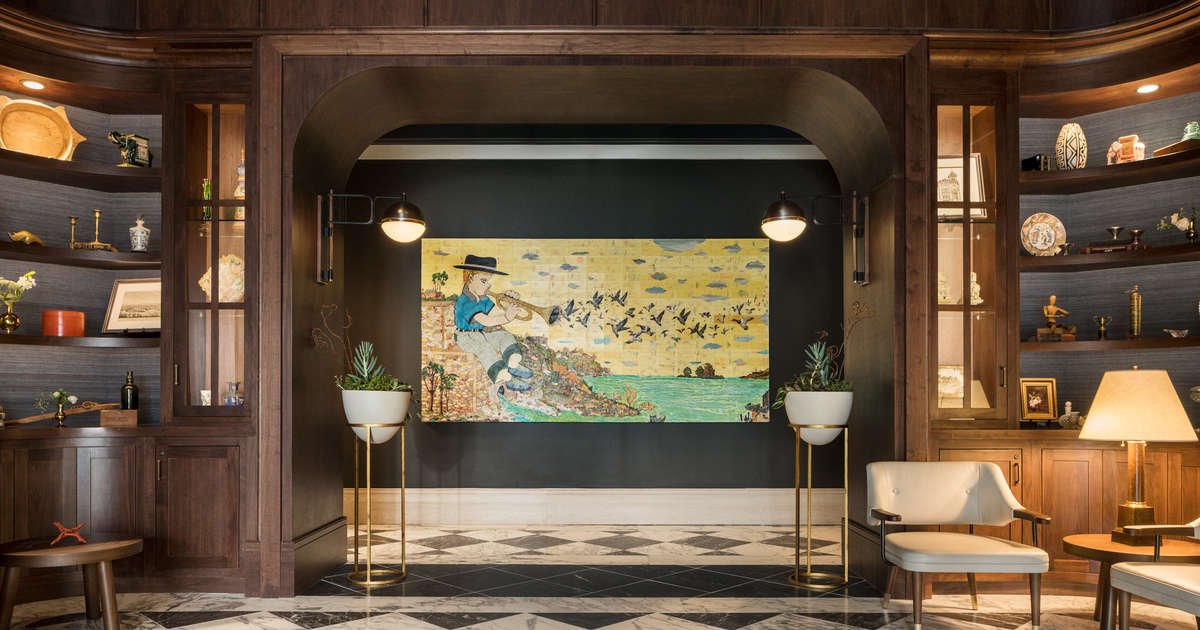“Art and culture are the lifeblood of a space – the connection to something larger that all humans intrinsically want to be part of. They work with architecture and design to accentuate the intended mood and vibe of a space.” This was one of several testimonials received from a study of hundreds of real estate professionals for the biannual State of the Art Report by NINE dot ARTS. What emerged from the study was a timely and powerful realization: that architecture, design, and art and culture are equally essential for achieving project success. And as the hospitality industry continues to bounce back from the pandemic while navigating economic challenges and changing traveler preferences, such realizations cannot be understated.
Below I describe how the results of this report can benefit the hospitality industry in particular, helping leaders maximize their return on investment by treating art and culture as equally critical as architecture and design.
How Art Improves Your Financial Success
While art may not be the first thing to come to mind for reaping significant financial returns, it is an undeniable asset when it comes to increasing time and money spent in a space. Findings from the State of the Art Report show that art and culture tend to lean toward a softer ROI – those returns that are difficult to measure like community goodwill, differentiation, and the ability to spark memorable conversations and experiences. But 80% of survey respondents said that the soft ROI generated from art and culture has a considerable impact on hard ROI – real financial metrics like revenue growth, room rates, F&B sales, repeat visitation, and more. Of these same respondents, 83% concurred that art and culture don’t get enough credit for their impact on a project’s success.
Let’s take the Perry Lane Hotel in Savannah, Georgia, where NINE dot ARTS curated a 1200+ piece art collection inspired by a fictional character, a Southern grand dame named Adelaide Harcourt. Thanks to this unique persona, the expansive art program feels more like someone’s personal collection amassed over a long and fulfilling life, consisting of approximately 3600 styling objects and antiques, as well as works by both world-renowned artists and emerging talent from the nearby Savannah College of Art and Design. The collection’s sense of intimacy seeps into every element of the guest experience, amplifying the hotel’s lavish design to create a distinct sense of place reminiscent of old Savannah.
Altogether, Perry Lane’s art, architecture, and design reinforce one another to tell a compelling story that both enriches the guest experience and reaps financial returns. Not only did Perry Lane sell for the highest dollar per key in the state of Georgia, but thanks to plenty of earned media, it has been recognized in such syndicated platforms as TripAdvisor, U.S. News Travel, Vogue, Travel + Leisure, and Condé Nast.
How Art Maximizes Your Budget
Today’s challenging economic climate has prompted many hospitality leaders to stretch their budgets as far as possible while working to satisfy guests’ preferences and maintain the integrity of their property’s brand values. And while cutting costs may seem like a necessary evil, report findings indicate one area that we’d all be wise to protect. Indeed, the art and culture budget is critical for ensuring a project remains competitive over time.
When respondents were asked to consider the costs associated with architecture, design, and art and culture, results found that while all three disciplines are equality critical, their budget impacts are not. Over 60% of those real estate professionals said that an art program’s impact is at least double its investment – and even agreed they should be spending more on their property’s artwork. If your mind is wondering how on earth this could be, just take a look at some of the testimonials:
- “[The art budget] is usually the most short-changed and cut back from start to finish.”
- “Money stretches the furthest there.”
- “It has the longest term impact after construction is complete ”
- “Its impact feels more direct to the end user. ”
- “It can accomplish more, with better community integration.”
- “It drives differentiation.”
These anecdotes indicate that when planned early and with intention, art and culture can actually help save money, producing memorable experiences that are more cost-effective than elaborate architecture or design changes.
So whether you’re undergoing a performance improvement project and need a cost-effective update to your hotel’s guest rooms – or you’re building from the ground up and need that creative “wow factor” in your hotel lobby – remember that protecting your art budget can actually maximize your return, producing economical solutions that distinguish your hotel from the masses.
How Art Increases Your Social Impact
Hotels are places where people come together for business, leisure, and travel. They’re places where locals can stop by the hotel’s restaurant for a coffee or cocktail, and out-of-towners can get a glimpse into a city’s authentic character. Often, they’re the backdrop for conversations, connections, and long-lasting memories. Thus one of the most important ROI metrics for hospitality developers to achieve is a positive social impact.
Fortunately, nearly 70% of survey respondents confirmed that art and culture are what most effectively create a positive impact in their projects. That’s because art is uniquely able to showcase diversity, equity, and inclusion, as well as promote community identity, engagement, and goodwill.
At Denver’s award-winning Clayton Members Club and Hotel, for example, a partnership with the local RedLine Contemporary Art Center allowed emerging and underrepresented artists to display and sell their work, and selected artists were even invited to join the social club by contributing to programming and events in lieu of membership fees. Further, by adding a 1% surcharge to every purchase in the building through the charitable Clayton Contributes Fund, the hotel can allocate revenue to local arts and cultural organizations that prioritize opportunity, equity, and inclusion. These innovative amenities have not only elevated the hotel’s reputation, but have made it the place to be for social gathering amongst locals and visitors alike.
So while thoughtful architecture and design are critical for producing ROI outcomes like increased market valuation and recognition, an intentional art and culture program can actually enhance those outcomes by sparking goodwill and good press – not to mention saving developers money in the long run. Ultimately, findings from the State of the Art Report paint a hopeful picture for hospitality leaders who treat art as equally essential as architecture and design, sparking the potential for greater financial returns, budget efficiencies, and ongoing social impact.





